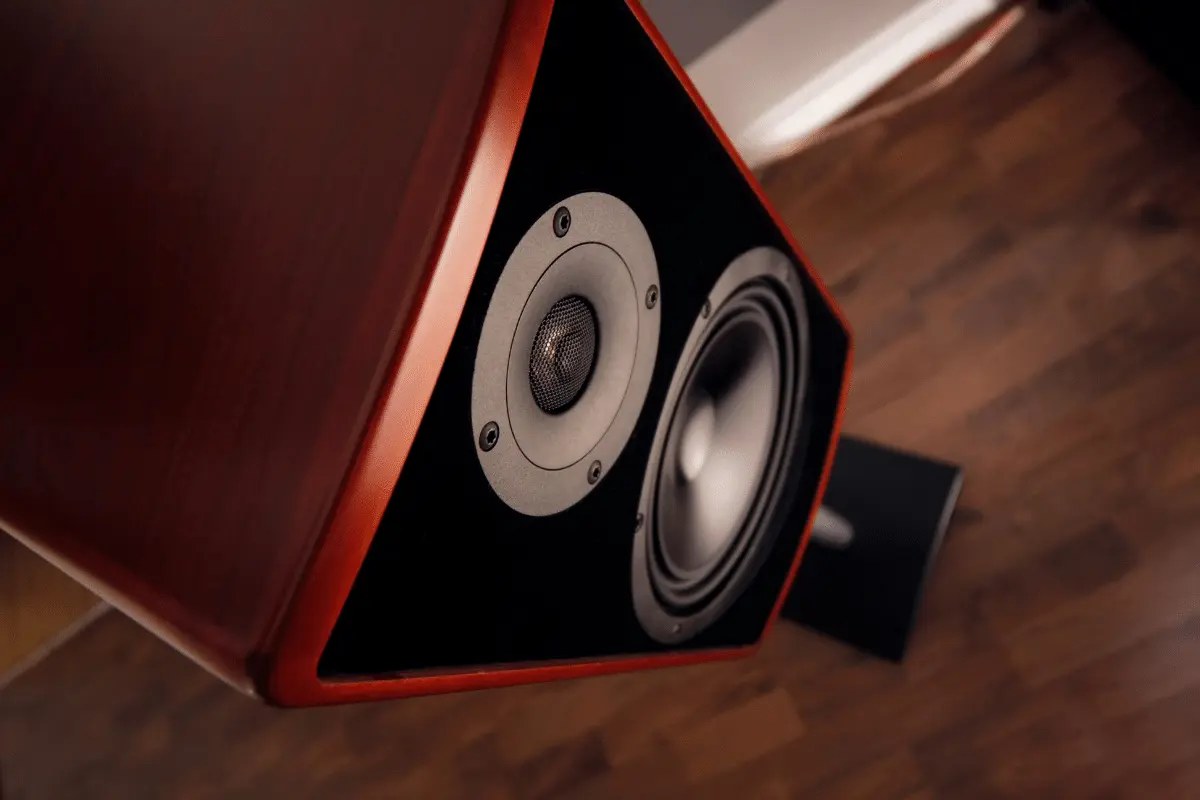As an alternative headphone for people suffering from hearing impairments, for joggers, and even for scuba divers, bone conduction headphones have been around for a long time.
They have a strong standing history of usage, but that is rarely a good indication of whether or not you should use them, so, are bone conduction headphones safe?
You should have no fear of using bone conduction headphones. This technology has been developed and used by audiologists for hearing aids since the 1970s. These headphones allow you to hear through the vibrations in your jawbone and skull but can become “unsafe” when listening to at high volume levels.
This does still leave a few questions and concerns for many prospective bone conduction headphone users, however.
These questions include how bone conduction headphones work if they are more prone to give you headaches and what you need to know when using these headphones.
Can Bone Conduction Headphones Cause Headaches?
Bone conduction headphones are a different means of hearing than what we are usually more used to.
These headphones entirely bypass the eardrums and instead, send the vibration directly to the Cochlea through the bones.
Just like with regular headphones, if you are using these headphones at really loud volumes can cause headaches.
Additionally, some people have reported light vertigo when playing the headphones at loud volumes.
However, the truth is, if you are using the headphones appropriately at a safe volume, there is little reason to believe that there is a link between more frequent headaches and headphone usage.
Headphones that don’t fit and are causing too much pressure on your temples or elsewhere on your head may be able to cause “external compression headaches.”
Additionally, listening to music at excessively loud volumes for extended periods of time can also cause headaches if not carefully.
However, if you are using earphones and headphones of any kind appropriately and safely, there is no link between the usage of headphones and headaches.
Can Bone Conduction Headphones Cause Damage to Hearing?
Just like average headphones, the simple answer is yes. Though there is a common misconception that bone conduction headphones are not capable of causing ear damage, this is entirely untrue.
They are just as “dangerous” and likely to cause hearing damage as the average traditional headphone.
Though it bypasses the eardrum, damage to the eardrum isn’t what you need to be worried about while you are using any headphones.
Especially if you are using your headphones for excessively long periods of time at incredibly loud volumes.
The real damage you need to be worried about from a headphone is to the Cochlea.
This is, however, true for both types of headphones, bone conduction and conventional headphones.
Neither type of headphone is particularly more dangerous than the other; it is just a matter of how you choose to use your headphones that can cause them to become dangerous to your hearing.
On their own, when used at moderate volumes, you shouldn’t have to worry about the damage your headphones may cause to your hearing.

Are Bone Conduction Headphones Just For The Hearing Impaired?
The bone conduction technology had been an incredibly big benefit to the hearing impaired, and those with hearing disabilities that are connected to their eardrum.
Because they bypass the eardrum, if someone’s impairment is directly connected to it, the bone conduction will entirely avoid where the issue stems and allow a hearing-impaired person to hear through bone conduction.
However, this technology is not and has rarely been exclusively used by the hearing-impaired communities. Bone conduction has been known to be used in the military and has been used quite frequently in the athletic community as well.
This is because of their increased safety, as they allow the user to both hear the world and situation around them while hearing either communication or just music through the bone conduction headphones.
These headphones have also been used in other circles as well, for example, they can be used underwater scuba diving community.
They were used in Google Glass, education, law enforcement, construction, and the possibilities around other usages for this technology are limitless.
They’re comfortable and safe to wear and have multiple benefits to nearly every need you could have when it comes to headphones.
How Do Bone Conduction Headphones Work?
Just like with regular earphones, bone conduction uses sound vibrations to convey sound into the Cochlea.
Sound waves, unlike light waves, can be pushed through thicker objects like walls, and bone, while still producing a sound you can register.
Think of when you head your neighbor playing music in the other room, for example.
Bone conduction headphones use this principle to conduct sound through your skull entirely, bypassing your eardrums to get the sound to your Cochlea directly.
Typically, your eardrums vibrate when sound waves pass through the ear to them, and this causes all of the other tiny organs to vibrate with it and sets everything into motion.
The Cochlea will record these vibrations and passes them on to the stereocilia that will start its journey to the brain.
Bone conduction headphones bypass the eardrums, but how does it work? If the eardrums act as the “trigger” for all of the other little organs to be set into motion, how do the bone conduction headphones bypass them to get the sound to be received by the Cochlea?
Though the eardrum is where the vibration starts from, it isn’t entirely essential to this process.
Usually, without its input, the rest of the tiny organs would remain completely still and static, but with bone conduction headphones, you can get those little organs in motion without the eardrum.
Well, the vibrations that are pushed through the skull from bone conduction headphones can reach the little inner organs of the ear, and set them vibrating.
The Cochlea can hardly tell the difference, as it’s still receiving the vibrations from these little organs the same way it would have if the eardrums had triggered it.
Just like if the eardrum had been the trigger to the vibrations within the ear, the sound is picked up by the Cochlea and sent up to the brain.
Your brain would register these sounds the same way they would have with traditional headphones because if the Cochlea doesn’t know the difference, neither will the brain.
Have you ever wondered why your voice sounds different in voice recordings and videos when you hear it inside your own?
As we spoke of above, your ears can’t tell the difference between the sounds that are sent through air conduction and bone conduction, so your brain is automatically hearing both at the same time while you speak.
You can hear the sound coming out of your mouth that is going through your eardrum, and the sound vibration of your voice is pushing through your skull.
Though there is a misconception that bone conduction headphones are entirely silent, this isn’t entirely true.
Though they are significantly less audible than regular headphones and earbuds, they’re not altogether silent, and they’re just designed to send sound waves through a denser object, in this case, your skull, instead of through the air like traditional headphones do.
The transducers of bone conduction headphones sit directly in front of your ears on your cheekbones, leaving your ears completely open.
They use that bone to conduct the sound into your Cochlea, so you can still hear your music while also being able to listen to people around you at all times.
This also makes them less likely to fall off during a run or through normal use like regular headphones.
What Are the Pros and Cons of Bone Conduction Headphones?
Before using bone conduction headphones for runs or daily use, consider a few of the pros and cons to both that might help you make a better, more informed decision on these headphones.
Pros of Bone Conduction Headphones
- Situational Awareness
- Bone conduction headphones don’t entirely cover your ear and block out all external noises. Instead, they leave the ear open so that you can still hear oncoming traffic, bikes, people at the park and other environmental sounds around you while you’re outside.
- If you are using these while on a walk or jog, they will ensure that you can hear what’s going on in the park and keep yourself safe throughout your jog.
- Medical Assistance
- These headphones have been used for people who have hearing disabilities related to their eardrums’ inability to function properly or at all. These headphones entirely bypass that need and allow people with hearing disabilities to be still able to hear through the bone conduction instead of their eardrums.
- The surgery for these types of implants is also considered minimally invasive, and don’t risk causing further hearing damage to the person with the hearing disability.
- Additionally, some have even stated that bone conduction headphones may even be beneficial to blind communities. It allows them to still use the vital sense of hearing and have their awareness around them, while still being able to use headphones for phone calls, music, and whatnot throughout their day.
- Comfortable
- Unlike headphones that sit in or over your ears, bone conduction headphones sit off your ear and thus have a much more comfortable fit. This helps avoid painful pressure in the ear, or over your head that could cause headaches after extended usage.
- Additionally, for those who find that their ear pods are constantly slipping out and their headphones are falling off, this alternative is incredibly helpful for them as well—helping to negate that problem as much as possible.
Cons of Bone Conduction Headphones
- Sound Quality
- Unfortunately, bone conduction headphones have a long way to go before they might sound exactly like the average headphone. These headphones will sound a little muffled by comparison to regular headphones, but many say it is neither good nor bad, just a different quality of sound.
- This is considered one of the bigger drawbacks of bone conduction headphones, as for people who are incredibly keen on their audio quality find it hard to get past. However, many also say the trade-off of spatial awareness is worth it for many.
- Cost
- Bone conduction headphones are notably more pricy than regular headphones/earphones. They aren’t nearly as widespread in the market and the technology is much more costly than our average headphones, which can be considered a major con for many people considering purchasing a bone conduction headphones.
What Are Some Common Usages For Bone Conduction Headphones?
A surprising fact about the earliest usages of bone conduction is that of Beethoven.
It is well known that he was a completely deaf composer, but he may have been among the first people to discover and use bone conduction to hear despite his disability.
How he would do it is, he would take a rod between his earth and connect/touch this rod to the piano while he was playing, and he could hear the vibrations through his skull and the rod to be able to hear while he was composing.
For a long time, the main use of bone conduction headphones was for usage in the military.
This is because bone conduction is a safer option for soldiers, as it allows them to still hear the situation around them while keeping in communication in the field.
Bone conduction allows the soldiers to hear even when their surroundings are incredibly loud, and they are easy to wear and don’t cause too much disturbance for the soldiers while they are on the field, making them a much safer option than the headphones meant to push sound through the air instead.
The reason that runners use these headphones as well is incredibly similar. Bone conduction headphones are much safer in louder and busier environments than the traditional headphone counterparts.
They allow the user to be able to hear what is going on around them, remain aware of their surroundings, and still allow the jogger to listen to music on the go with peace of mind.
This technology has been adopted and repurposed multiple times; one of the most notable times was in the early 2000s when Google Glass used bone conduction in their glasses.
Where Did Bone Conduction Start?
It is generally accepted that one of the first times bone conduction was mentioned in a book was in “De Subtilitate,” published in 1550 by Girolamo Cardano though it was only considered with theoretical interest and not yet used for diagnoses.
However, a man named Hieronymus Capivacci finally realized that the experiment done by Cardano could be of incredible significance.
He used this idea and may have been the first person to realize the difference between conductive and sensorineural hearing impairments.
He did this by connecting the teeth of a patient with the strings of a zither; he would do this by using an iron rod about 2 feet in length.
If they couldn’t hear anything, he concluded that they had damage to the auditory nerve if they did hear something, he concluded that they had a disorder of the tympanic membrane.
These findings were considered controversial at the time, and despite many people trying to prove/theorize about the idea of bone conduction, it didn’t take off for a while.
The knowledge has been around for well over 150 years, but it took until the 19th century for it to really get back into the public eye again and find itself rediscovered.
Thanks to these early days of bone conduction, however, we now use the technology for both diagnostics and for hearing aids. This technology has been a game-changer for the hearing impaired community.
It also serves as a great aid for the military, joggers, scuba divers and many other groups of people for its safety.
Bone conduction headphones have a long history of testing and usage starting as far back as Beethoven himself.
Now, it is a technology shared by the hearing impaired, scuba divers, the athletic community and the military for many reasons.
They are incredibly useful and allow for spatial awareness through usage and the ability to still hear them even when the surroundings are loud.
Though there are many concerns over the safety of bone conduction headphones, many are unsubstantiated.
Bone conduction headphones are just as safe as regular headphones when properly used at safe volumes and without excessive usage.
Both traditional headphones and bone conduction headphones pose the same risk to the Cochlea if unsafely used.
Additionally, the only risk for headaches when it comes to bone conduction is if they’re pressing too hard on your temples for some reason, or if you are listening to music at unnecessarily loud volumes.
Final Thoughts: Are Bone Conduction Headphones Safe
In conclusion, bone conduction headphones are safe for regular usage and are actually used by many communities frequently with great results.
Bone conduction is a technology that has been around for hundreds of years, and though they aren’t the same in terms of audio quality to traditional headphones, they still find safe and important usage in many circles today.




Leave a Reply
You must be logged in to post a comment.